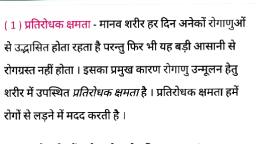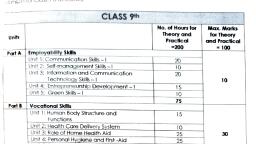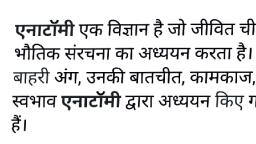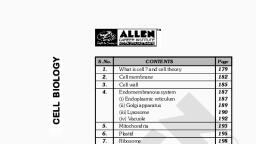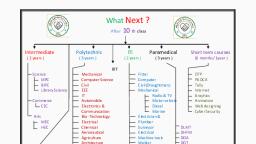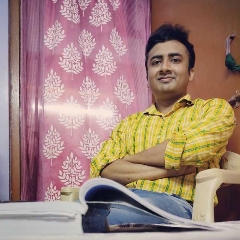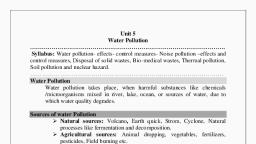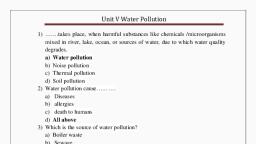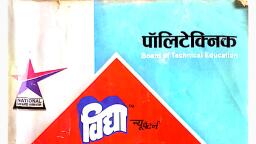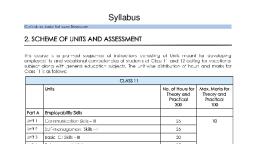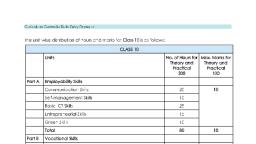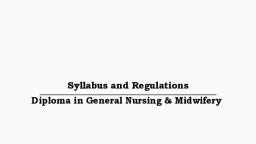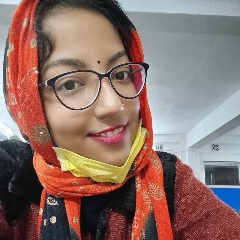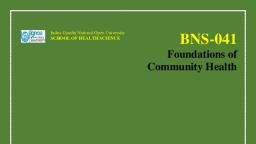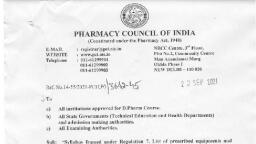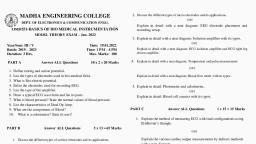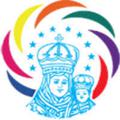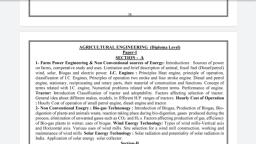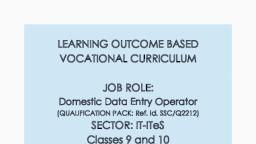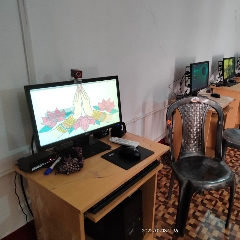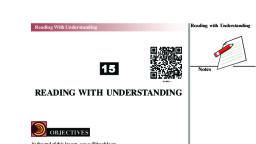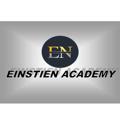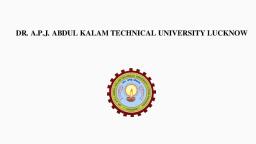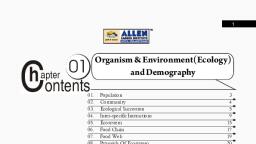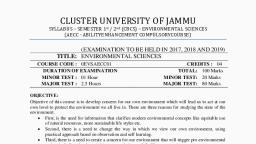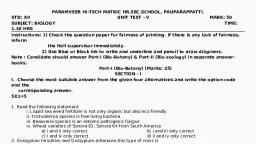Page 1 :
Sub Unit 1: Immunization, Leaming Outcome, , Theory, , I.Differentiate, between various, , 1. Meaning of Immunity, 2. Differentiate between, innate and adoptive, , types of, , Practical, , (20 Hrs), , 1. Differentiate between, Bacteria and Virus, 2. Prepare a sample of, 05, , Immunization, , immunity, , immunity, , Duration, , 3. Differentiate between, passive& active, , immunity, Prepare, immunization, schedule chart, , 1. Importance of, immunization, , 1. Immunization (card), calendar for an infant, based on date of birth., , 2. Side effects of, immunization, , 05, , 3. Various aspects of, Immunization, , schedule chart, 3 ldentify the key, components of, universal, , 1. Key components of a, universal, immunization, , programme (UIP), , immunization, , programme (UIP), prepare list, , 2. Enumerate national, health programme, , 1. Key components of a, Universal Immunization, , Programme, 2. Enlist the diseases, covered under UIP, , 3. List the national heaith, , national health, , progamme, identity the key, , programme, , 1., , Key components of a, , 1. Key components of a, , Pulse polio, , Pulse Immunization, , putse polio, , Immunization, , Programme, , immunization, , Programme, , Components of, , progamme, , Sub Unit 2: Drug Administration and Physiotherapy, 1. Demonrstrate, the knowedge, , ofbasic, principles of, , drug, , administration, 2. Demonstrate, the knowledge, of forms and, , routes of, , medication, , 05, 20, , Total, , Learning Outcome, , 05, , Pracical, , Theory, 1. Drug administration, , (20Hrs), , .Prepare a complete, medication recod, , 2. Classify medicine, groups, 3. Legal aspects of, record keeping and, , Duration, , 2. Seven rights during, assisting the drug, administration, , 03, , documentation, , 1. Enlist different forms of ., , common forms and, routes of drug, , medicine, , 2. Importance of foms, v/s route in drug, administration, 3. Read the instruction on, , the label of the, medicine, , 4. Various signs of allergy, 5. Meaning of standard, abbreviation used in, , the medication chart, , 2., , Contraindication and, , indication for use and, side effects of drugs., , 04
Page 2 :
VOCAONAL EDUCAIIUN, , 3., , Ckassity the drugs 1. Common side effects, , 1. Drugs of different, , category, , of anti- depressant, , 2. Classification of drugs 2. use of drug particular, 3. Techniques of, indicatiorn, 4., , disposing medicine, , 3. Methods of disposing, , Preventive measure to, control the mistake in, , 4. Medical eror in drug, , medicine, , drug administration., , 4. Demonstrate, , administration, , 1. Infroduction of, , the knowledge, of basic, , 2., , principles of, , 1. Different techniques of, , Physiotherapy., Holistic, , physiotherapy, , approach used, , 2. Need of, , in physiotherapy, , physiotherapy, , 3., , 5. Demonstrate, 1., , the knowedge, , Basic, , principles of, , physiotherapy, , Introduction of Body, mechanics, , of principles and, , safely move, 2. Different positionsof, , positioning of patient, , body, mechanics., , patient medical, treatment., , 6. Demonstrate, , the knowledge, of breathing, , and coughing, , exercises, , |1. Procedure of, , COughing and, breathing, exercise, 2., Working of trifle, , 04, , |1. Role play the patient, , 2. Moving and, , techniques of, , physiotherapy in, , different condition of the, patient, , 1., 2., , 03, , Deep breathing and, , coughing exercises, Perform, , pursed lip, , 02, , breathing,, , diaphragmatic, , breathing, abdominal, breathing and bely, , Total, , breathing exercise, , Sub Unit 3: Geriatric, and Child Care, Leaming Outcome, 1., , Theory, , Demonstrate the 1., Iniroduction different, knowledge of, age groups and, , facts related to, old age, , 2. Identiy the, , normal changes, that occur at old, age, , biological aging, , 3., , Changes that ocCur, , 1., , people, 1., , in, , 2., , different systems of, body during old age, Legal needs of the, elderly, Reasons for, , Demonstrate the, , accomplishing, , basic needs of, , elderly people, , caring, , 1. Security and safety, needs of an, , people, , elderly, , 2. Enlist any five, , requisites for better, , feeding during old, age, , 3. Food and fluid needs, , Duraion, , (20 Hrs, , psychosocial reasons of, , problems in old age, , elderly, knowledge of, , Practical, 1. Different, 2. Biologicalage, andgroups, , 2. Common health, , 3., , 3., , 20, , ageing., , 02, , Problems in human, , physiological changes, Normal changes that, occur at old, , in, , age, different systems, and, , of the body., 2., , part, , Special needs, emotional, , 02, , Support, social support, and legal needs, at the old age required, 1. Thinking and, learming, abilities, people, , of old age, , 2. Home Health Aide, , should communicate, , with an older patient, , 04
Page 3 :
Sub Unit 3:, , Geriatric, , and Child Care, , Leaming Outcome, , Theory, , Pracical, , of elderly people, 4. Demonstrate the, , knowledge of, , |1., , examination of the, , examination, 2., , techniqUes of, the physical, , Techniques of, , physical examination, , patient, 2. Use different techniques, of the physical, , viz., , assessment of, the patient, , (20 Hrs), , 1. Perform physical, , purpose of physical, , significance,, purpose and, , Significance and, , Duration, , 03, , examination, , Inspection, Palpation, , Percussion, Auscultation, , Manipulation, , 5. Provide, , assistance in, various, examinations of, the patient viz., , 1. Role of Home Health, Aid (HHA) in assisting, the health, , examination of a, patient., 2. Care of geriatric, , eyes, ears, nose,, , throat, neck,, chest, etc., , immobile, paralytic, , 1. Various positions of the, , patients while the health, of the patient is, , examined, , 05, , 2. Assist examinatiorn of, eyes, ears, nose, throat,, neck, chest, efc., , and other patients., 3. Enlist the precautions, to be taken while, , examinirng height and, 4., , weight of the patient, Technique for cheest, and abdomen, , 6. Demonstrate the, , examination, 1., , knowledge of, caring of infants, and chidren, , Enlist different age, group before 18 years, , of age., 2., , Stages of learning, and thinking abilities, , amongst infants and, children's., 3. Importance of, , nutrition and, hydration required for, infants and children., 4. Safety needs of, , children., 6. Measure physical, examination., , 1., , ClassiYy the age groups, of children below 18, , years, 2. Growth and, , development of children,, stages of learning and, thinking ability of child, and their safety aspects, 3. Nutrition and hydration, for infants and children's, , and special care needed, for themm, , 04
Page 4 :
Sub Unit 4: Prevention and Control of Infection in Home Setting, Leaming Outcome, , 1. Describe the, diseases caused, by microorganismn, , 1. Definition of disease, 2. Process of infection, 3. Pathogen, , 1., , 4. Three vertices of the, , 2., , different types of, , OCCurence and, , microorganisms, , prevention of disease, , 3., , Demonstrate the, knowledge of, process of, , disinfection, 4. Demonstrate the, , knowledge of, care of articles, , bacteria, virus, fungi and, , 03, , parasites, 2. Human diseases caused, by the bacteria, virus,, , fungiand parasitess, , 1. Types of disinfection, , 1. Enlist best, practices, , 2. Differentiate between, Concurrent and, , housekeeping, , 2. Good housekeeping, practices, , terminal disinfection, 3. Process of fumigation, 1., , Factors affecting the, , 1. Differentiate between, , 2. Enlist the names of, , bacteria and viruses, causing diseases in, human, , 04, , causing microorganisms, , 2. Demonstrate the 1 . Common diseases, , diseases and their, Causal agents, , of body, , triangle, , 5. Differentiate between 3., , common human, , (20 Hrs), , Common places, where microbes are, commonly found, Common places in the, hospital with highest rate, of infection, , epidemiological, , knowledge of, , Duration, , Practical, , Theory, , 3. Effectively manage the, , with sulphur, , 06, , Isolation Unit, , Importance of care of|1. Care of various rubber, , rubber goods., , 04, , based articles, ward, , 2. Procedure to undo, the contaminated, gloves, , articles and instruments, 2. Removing different kind, of stains, , 3. Procedure of, removing different, kinds of stains, 4. Ways of care of, , 5, , Provide, assistance in, , disinfection, , syringes and needles, 1. Cleaning techniques, , ., , VarioUs cleaning, techniques, , of different areas of, , hospital, 2. VarioUS cleaning, , techniques used, , 03, , 2., , Different chemical used, in cleaning the floor, 3. Role of HHA in managing, , disintection, , Total, , 20
Page 5 :
Sub Unit 5: Bio, , Medical Waste, , Leaming Outcomne, 1. Demonstrate the, , knowledge of, bio- medical, Waste, , management, , Management, Practical, , Theory, , 1. Define bio- medical, waste, 2. Enlist the risks involved, in poor waste, , management in, , hospital, , ., , Durafion, (20 Hrs), , Waste according, , 2. to their category, 3. Need of bio- medical, Waste management, of, 4. Routes of fransmission, , infection in hospitals, , 3. Importance of hOspital, waste management, with respect to, , 05, , hospital staff and, general public, 4. Bio-medical waste, , management helps in, environment, , protection, 5. Enlist the routes of, , transmission of, 2. Demonstrate the, knowledge of the, sOurces and, , disposal methods, of, , bio-medical, waste, , 3. Identify the role, of personnel, involved in waste, , management, , infection in hospifals, , 1. Enlist the sources, of, bio- medical waste, 2. Areas of bio medical, waste generation in, , hospital, 3. Method of disposing, off of microbiological, and bio technological, waste in hospitals, 4. Importance of colour, coding criteria, 1. Functions of hospital, waste management, committee., 2. Importance of training, on hospital waste, management to, , 1. VarioUS SOUrces of bio-, , medical waste in, , hospitals, , 2. Disposal techniques of, different bio- medical, waste, 3. Bio-medical waste, , 05, , according to category,, container to be used for, , disposal and class of biomedical waste, 1. Role and functions of HHA, in bio- medical waste, , management, , 05, , 2. Providing training to all, categonies of staff of the, , hospital., , different categories of, , staff in a hospital., Total, , 15
